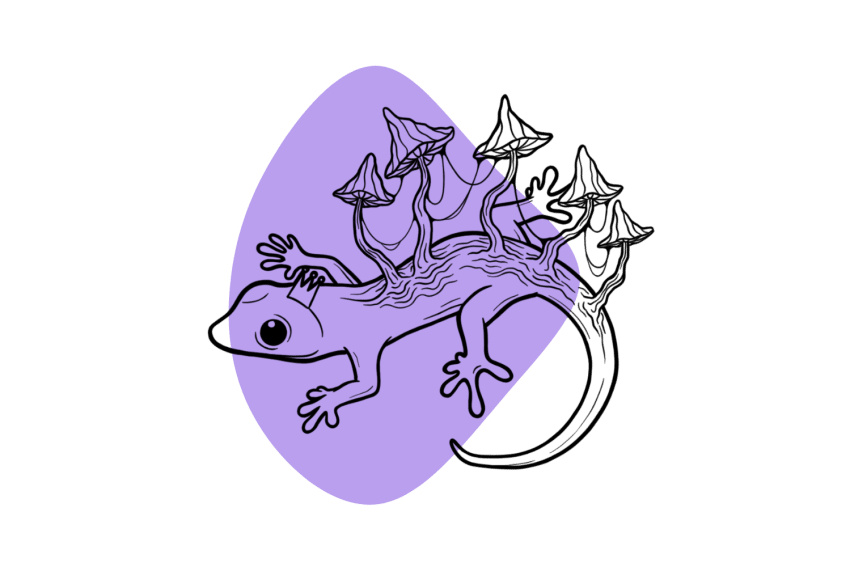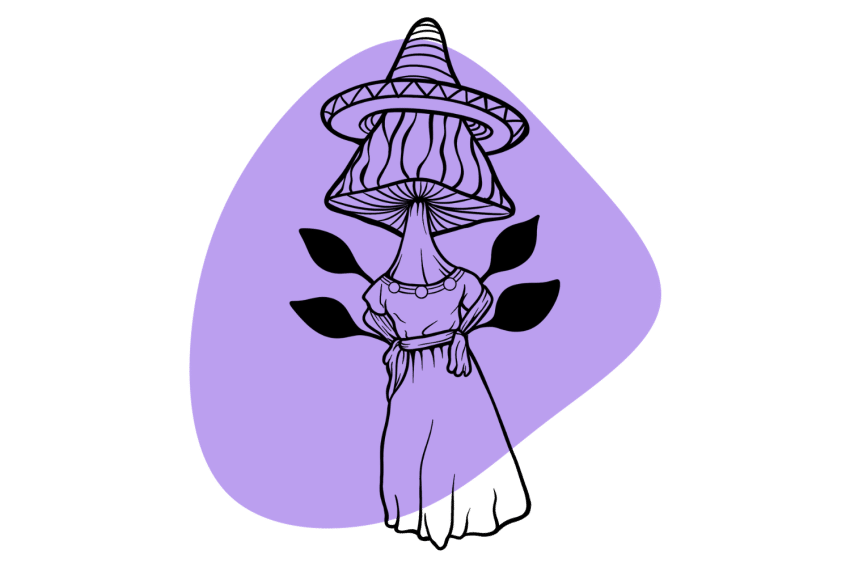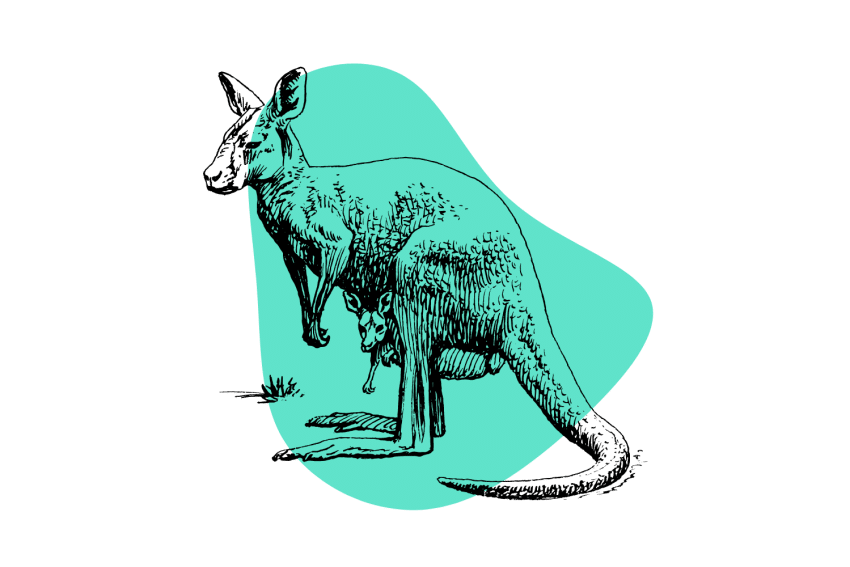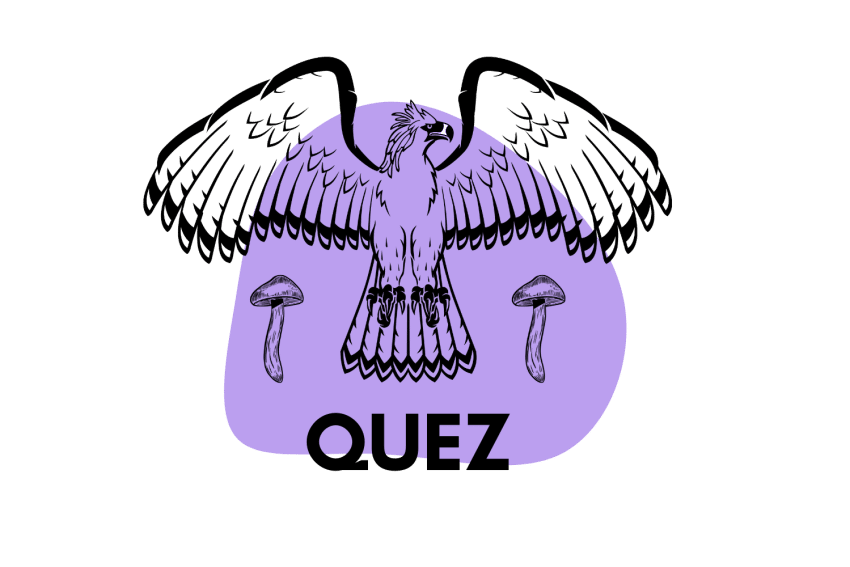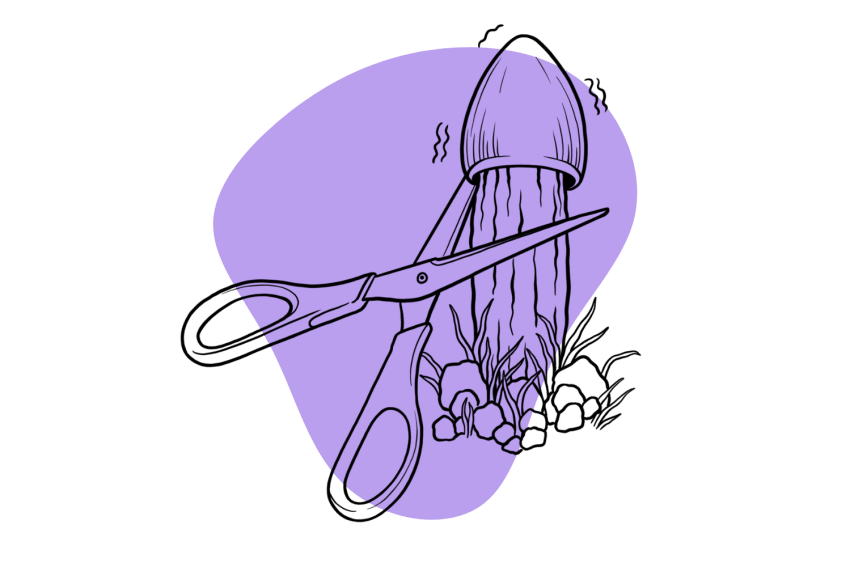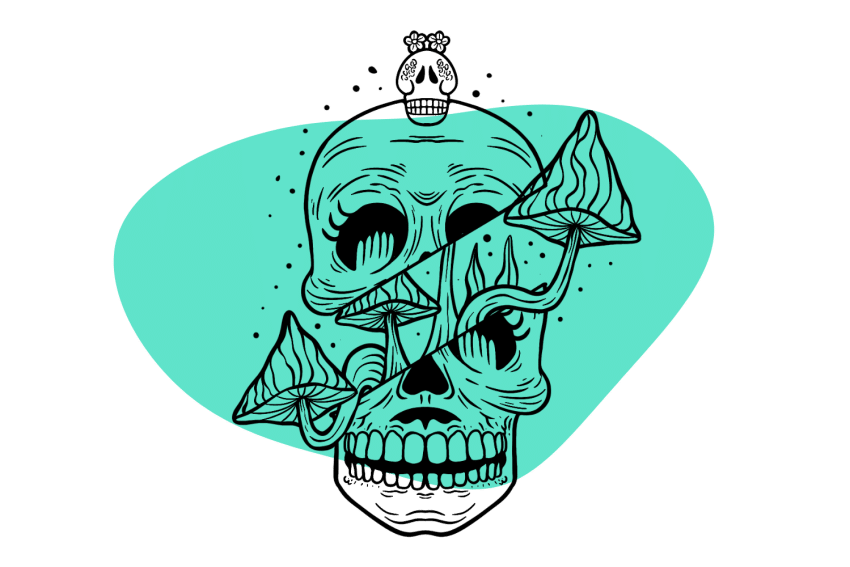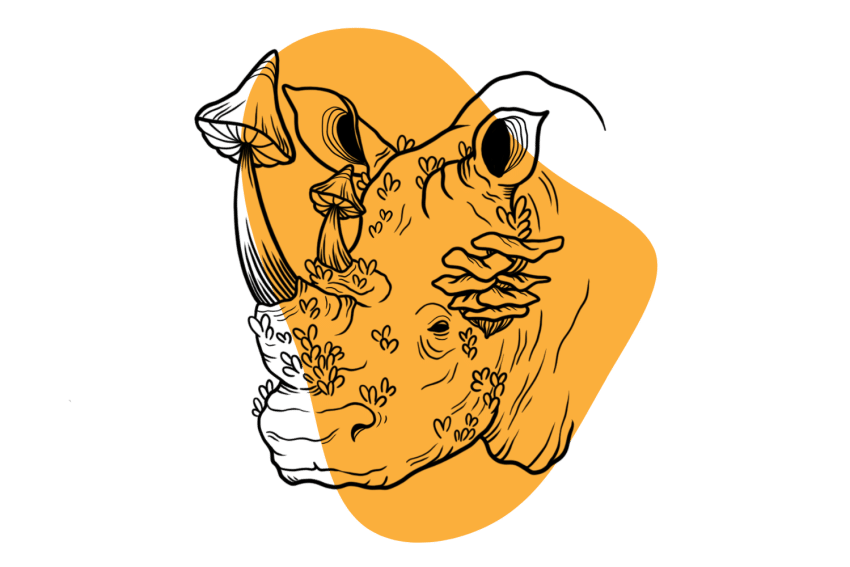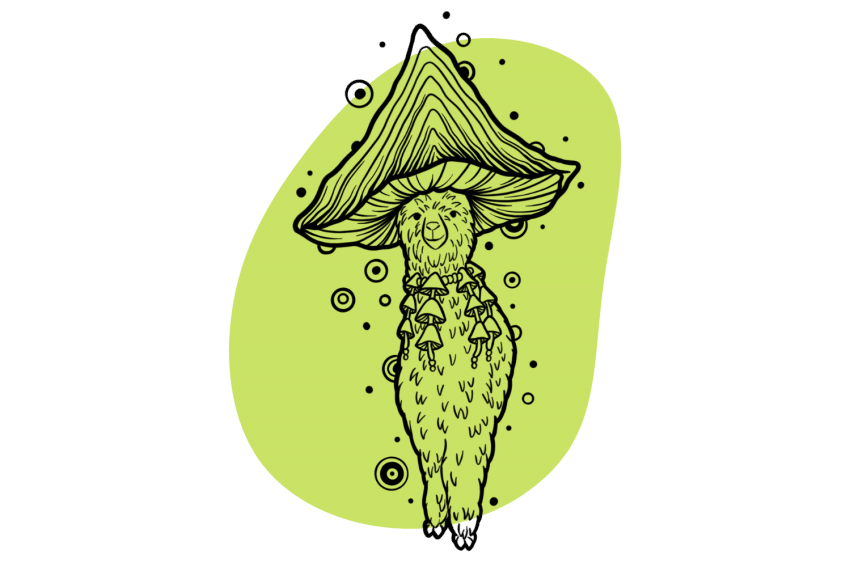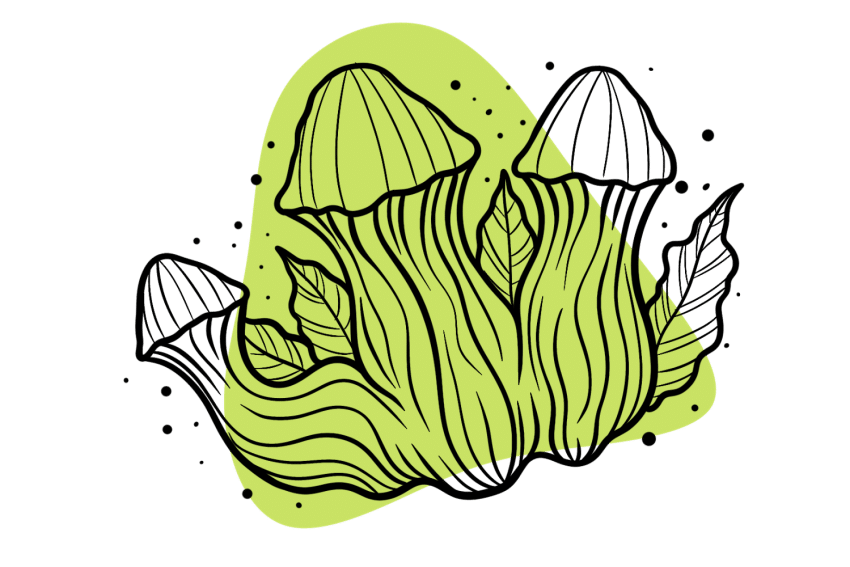The Albino Burma Strain: A Leucistic Variant of the Burmese Strain
This Burma off-shoot isn’t a true albino but has some top-notch bag appeal and powerful hallucinogenic effects.
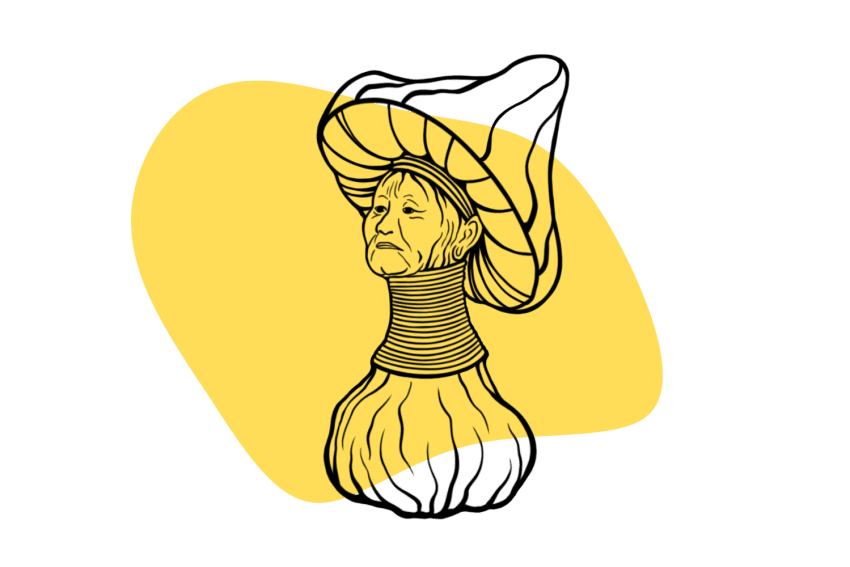
Albino Burma is an albino variant of Southeast Asia’s classic, high-potency Burma strain. Although not a true albino (it still produces some pigment), this strain produces ghostly white caps.
The original Burma sample was collected from just outside of Yangon, Myanmar — formerly known as Burma (hence the name). It was developed into the Burma strain before someone later developed this leucistic version.
Unlike many other albino shrooms, this Southeast Asian strain is surprisingly easy to cultivate. It’s contamination resistant, not prone to aborts, and can thrive in an unoptimized environment. This makes it the perfect choice for the beginner looking at growing a leucistic (white) strain.
There’s not much information about this rare strain, but we dug up what we could, including its origins, potency, relatives, where to find spore samples, and how it’s best cultivated.
Albino Burma Specs
| Potency | Above Average 💪 |
| Cultivation | Easy |
| Species | Psilocybe cubensis |
| Substrate Recommendation | Rye Grain, Bird Seed |
| Sold By | Spores 101 (🇺🇸/🇨🇦), Miracle Farms (🇺🇸/🇨🇦), Sporeslab (🇨🇦), The Magic Mushrooms Shop (🇪🇺) |
History of the Albino Burma Strain
The Burma strain originates from Myanmar (formerly Burma), a country in Southeast Asia between Thailand and India. A Thai student was supposedly the first to discover and collect this strain near a village called Yangon. However, it’s widely accepted that John Allen, the famous mycologist, brought the first sample back to the West.
Apparently, the student who discovered the strain gifted a sample to John Allen, who brought it back to the West, cultivated it, and distributed the spores among the mushroom community.
John Allen grew only one flush from the original Burma spore sample and propagated them, which he distributed across the United States, Canada, and Europe. Allen has stated that the spores sold online today likely originated directly from the sample the Thai student gifted him — pretty amazing.
Albino Burma Strain Potency & Psilocybin Content
Albino Burma is considered “above average” in terms of potency. The effects are incredibly intense, with a strong body high and vivid, closed- and open-eye visuals. If grown correctly, Albino Burma can produce a total tryptamine content in the range of 1.4% (double what we’d consider average for this species).
Only two samples of Albino Burma have been entered into the Psilocybin Cup so far (both entered by Blackstar Mycology).
The analysis found the average between the two samples was 0.85% of total tryptamines. The strongest sample contained 1.41%.
Albino Burma Strain Variations & Genetic Relatives
Albino Burma is an isolation of a leucistic mutation from the original Burmese strain. Of course, Albino Burma’s closest relative is the Burma strain. However, it may have a few other relatives from Southeast Asia that share very similar growth characteristics.
Here are a few of the potential relatives of the Albino Burma Strain:
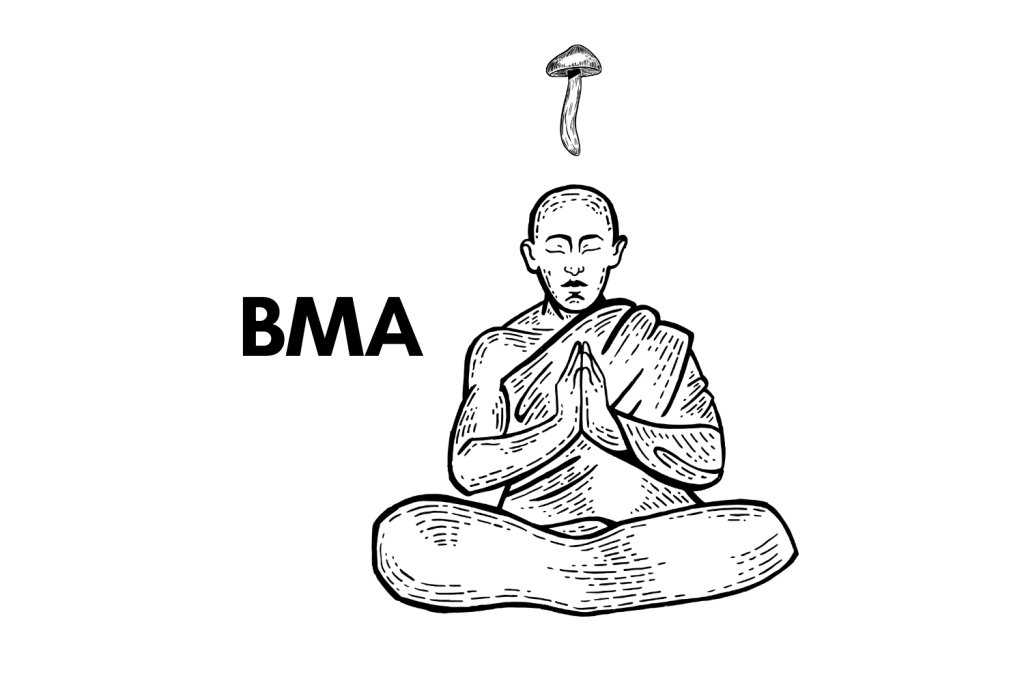
1. Burma (BMA)
The Burma strain is the parent strain of Albino Burma and is identical in every way other than its color.
This strain is well-rounded and has all the traits of a typical Southeast Asian strain. It’s resistant to contamination, is an aggressive colonizer, and can grow in unoptimized conditions. It’s a great choice for the amateur cultivator with little in the way of experience.
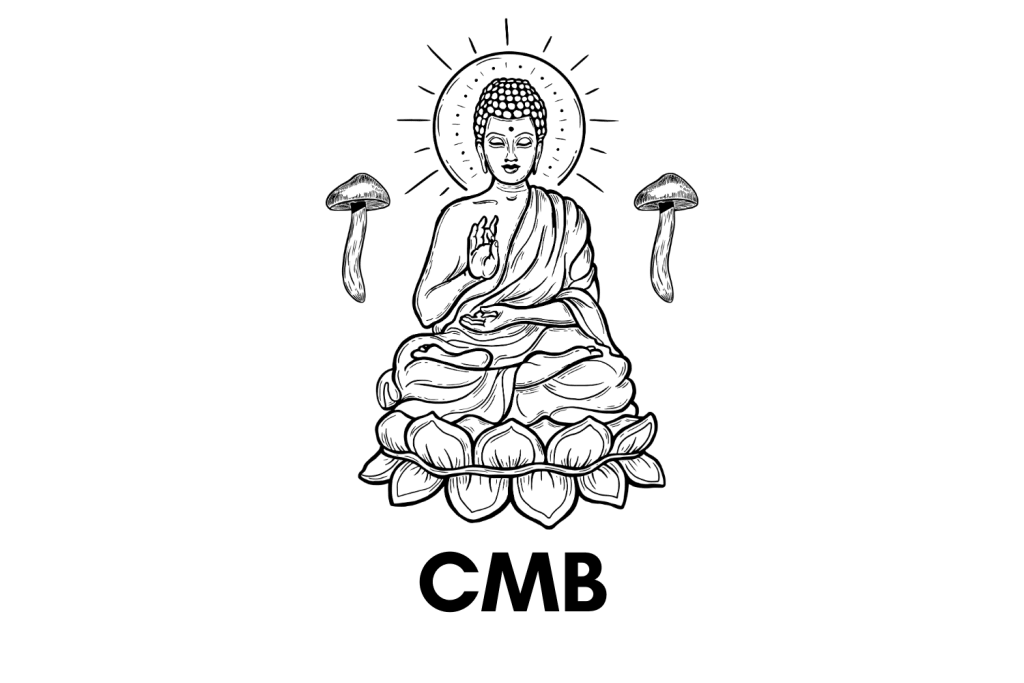
2. Cambodian (CMB)
Cambodian is another popular Southeast Asian strain, discovered by “Mushroom” John Allen during his travels searching for psychedelic fungi in the 1990s. He found it growing outside the temple of Angkor Wat in Cambodia. It shares several characteristics with the Burma strain and has all the desirable traits of a Southeast Asian strain.
Cambodian is famous for producing incredibly dense flushes, making it ideal for commercial growers and home cultivators who want to produce a large number of mushrooms quickly. It’s contamination-resistant and can grow in an unoptimized environment, making it easy for beginners.
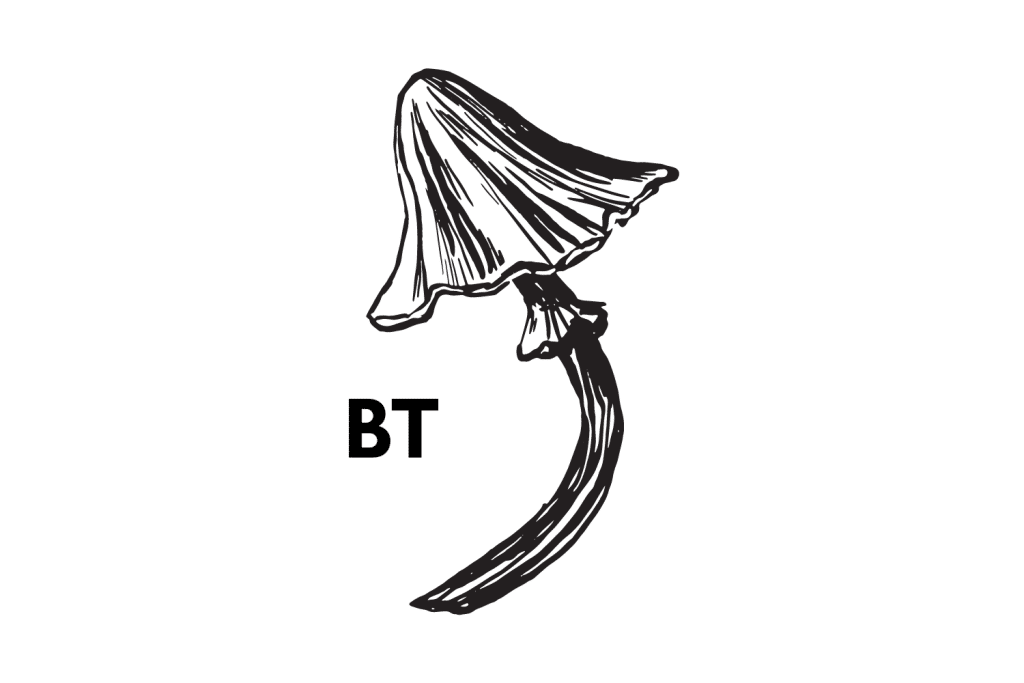
3. Ban Thurian (BT)
Ban Thurian shares several similarities with the Burmese strain. It was discovered growing in Thailand by none other than John Allen during his 1990s expedition.
It’s a pretty standard strain in terms of potency and looks, but it’s popular for its ease of cultivation.
With great contamination resistance, rapid colonization, aggressive fruiting, and the ability to grow in unoptimized conditions, it’s an attractive strain among beginners. It’s resilient to high temperatures and can produce big yields over several healthy flushes before the colony succumbs to mold growth.
Ban Hua Thanon is relatively average in appearance and potency, but its easy cultivation makes it an attractive option for many mushroom lovers.
Where to Buy Albino Burma Spores
Albino Burma spores are tough to find. The strain exists, and you can find several pictures of pale white Burmese fruiting bodies online. However, they’re almost impossible to find the genetics for this particular mutation.
With that said, here are some of our favorite vendors to check out. They may not have Albino Burma, but you’re sure to find something else that catches your attention:
- If you live in the United States — MYYCO, Spores 101, Miracle Farms
- If you live in Canada — Spores 101, Sporeslab, Planet Spores
- If you live in Europe — The Magic Mushrooms Shop (🇪🇺), Shiny Spores (🇬🇧)
→ View all spore vendors & grow kit suppliers
How to Grow Albino Burma Mushrooms
Albino Burma is surprisingly easy to grow. Most Southeast Asian Psilocybe cubensis strains are resistant to mold, colonize quickly, and can grow in unoptimized environments, making inoculation, incubation, and fruiting incredibly simple.
There’s little information on substrate preferences for Albino Burma, but we can assume it does well on rye grain or wild bird seed, as the original strain does.
Being a Southeast Asian strain, it will likely do well in a warm and humid environment. For the best results, keep the fruiting chamber between 73 and 82 degrees Fahrenheit (23 and 28 degrees Celsius). Control the humidity with a misting bottle.
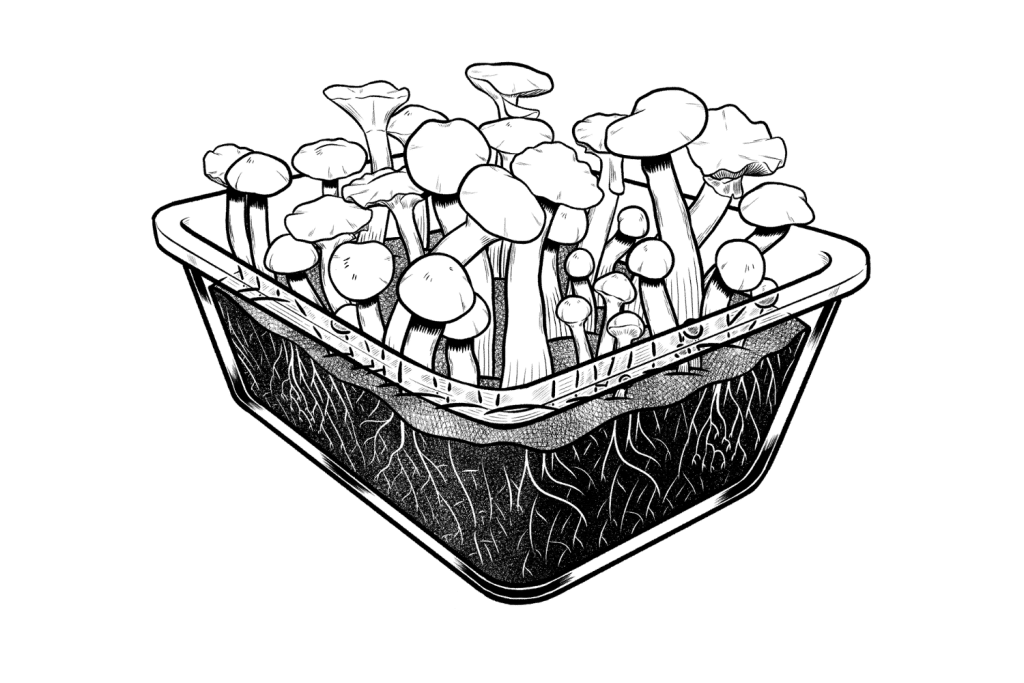
The easiest way to grow Albino Burma is by using a technique called PF-Tek. This method will produce great results if it’s performed correctly. It’s a good cultivation technique for beginners because keeping everything sterile during inoculation and incubation is relatively easy.
Growing magic mushrooms with the PF-Tek method requires very few pieces of equipment. You can buy everything you need from hardware stores and garden centers. The technique involves filling jars with substrate and inoculating them using a spore syringe. These jars incubate for two to three weeks until mycelium forms.
The mycelium cakes are removed and placed in a fruiting chamber on top of a layer of vermiculite or substrate. The cakes will then begin producing mushrooms that can be harvested as they mature.
You can find out how to grow magic mushrooms using PF-Tek in our mushroom cultivation guide.
Other Albino Strains That Are Easy to Grow
Albinos, by nature, are prone to aborts and tricky to cultivate. Albino Burma, although not strictly albino, is an incredibly easy pale-white strain to grow. However, it’s not the only easy-to-grow Psilocybe cubensis strain that produces white fruits.
If you’re interested in growing an albino strain but don’t have much mushroom cultivation experience, here are a few strains to look at:
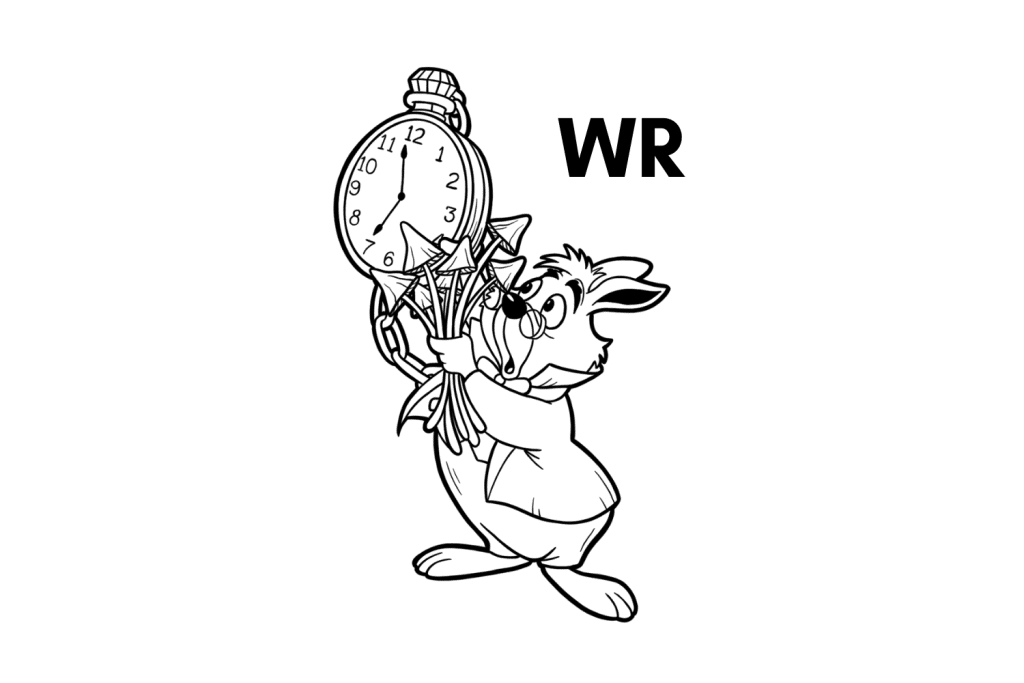
1. White Rabbit (WR)
White Rabbit was developed by a group of Dutch cultivators in Holland and is a hybridization of Albino Penis Envy and Moby Dick — two notoriously potent strains.
White Rabbit is easy to grow thanks to its resilience to contaminants, aggressive colonization, and ability to thrive in unoptimized conditions. It’s the perfect choice for the amateur cultivator looking for a high-potency albino strain to add to their collection.
Many claim that White Rabbit is the most potent strain of Psilocybe cubensis out there. We don’t have figures to back this up, but we could see it taking on the likes of Tidal Wave in terms of psychedelic effects.
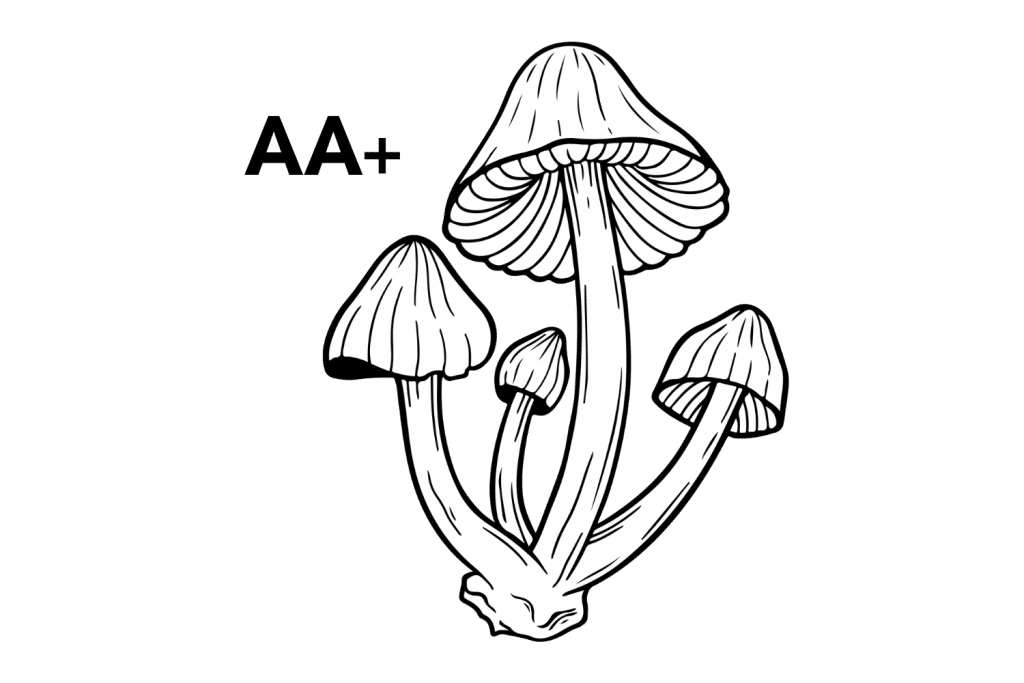
2. Albino A+ (AA+)
Albino A+ is an isolated albino mutation of the original A-Strain (also known as A+). Although not a true albino, these fruits are entirely white.
Albino A+ is identical to the original A-strain in terms of looks, cap size, and potency, but the fruits are entirely white. It also retains the same heavy spore production that the A-Strain is famous for. These spores are purple-black and easy to collect, making them ideal for people who want to harvest spores for future grows or mycology.
You can grow this strain with little knowledge, experience, or equipment.

3. Yeti Strain (YETI)
The Yeti Strain was developed by the infamous mycologist and frequent Shroomery member “Jik Fibs.” It’s a genetic isolation of the previously popular True Albino Teacher strain. It shares several qualities with Golden Teacher but produces pure white caps.
Like Golden Teacher, the Yeti Strain is easy to cultivate. It’s resistant to contamination, quick to colonize, and can produce several dense flushes before succumbing to mold. Potency is above average, and the resulting mushrooms are stunning to look at.
This is a fun option for the beginner who wants to dabble with a set of albino genetics.
Strains vs. Species: What’s the Difference?
Albino Burma is a strain of the Psilocybe cubensis species. There are many psychedelic mushroom species, but P. cubensis is the most common globally. They’re also one of the easiest to cultivate, which is why it’s so popular among the mushroom community.
Within the Psilocybe cubensis species, there are hundreds of different strains. These strains, Albino Burma being just one of them, are incredibly diverse, and the potency can vary drastically between them. However, they all belong to the same group. So, how is this?
- Species is the word used to describe a family of biological organisms that can successfully breed or interchange genes.
- Strain is the word used to describe a genetic variant within a species that shows differences in characteristics. Strains can successfully breed or interchange genes if they belong to the same species.
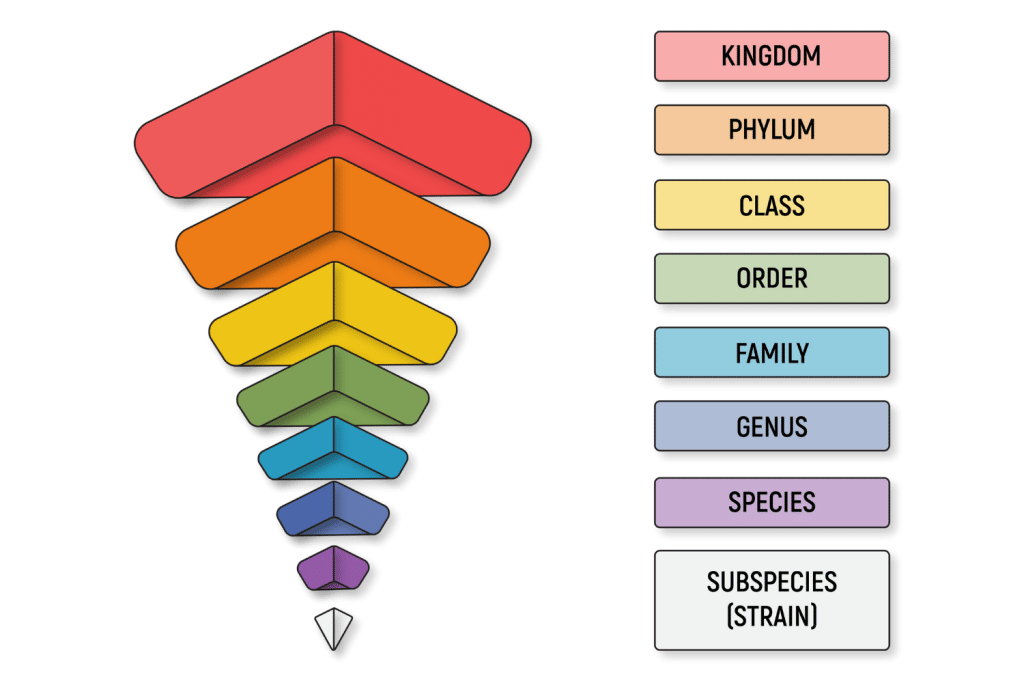
Genetic variants occur naturally among several different species. Certain strains of the same species develop traits to cope with their environments. For example, a strain in Thailand would adapt to humid environments, whereas a strain in North America would adapt to thrive in cold or dry conditions.
Humans also create strains to isolate traits that are beneficial or enjoyable for us.
For example, we often crossbreed flowers to create different colors of blooms.
We’ve also cross-cultivated shroom strains to create different growth characteristics, aesthetic qualities, and potencies. Cannabis is another popular example. We’ve cross-cultivated it to develop strains with more THC, CBD, and other different attributes. We’ve done it with Koi Carp to create strains with different patterns and colors and dogs to create breeds of all shapes and sizes.
Here are just a few examples of strains that we as humans have created through selective breeding:
| Species | Strain 1 | Strain 2 | Strain 3 | Strain 4 |
| Psilocybe cubensis | Golden Teachers | Penis Envy | Burma | Colombian |
| Cannabis sativa | Blue Cheese | Hindu Kush | Lemon Haze | White Russian |
| Canis familiaris | Jack Russel Terrier | West Highland Terrier | Golden Retriever | German Shepherd |
| Cyprinus rubrofuscus | Kohaku | Chagoi | Shirt Utsuri | Ogon |
Final Thoughts: Albino Burma Isn’t Albino, but It’s Still Great
Albino Burma isn’t a true albino, but this makes it almost better. Albino strains are more difficult to cultivate, but Burma is relatively simple, making it ideal for anyone looking for a white shroom.
With a potency close to Penis Envy’s, this shroom is sure to please. If you want to try it out, make sure to buy spores from a reputable vendor to avoid any problems.
As always, know your local laws and use them responsibly.

